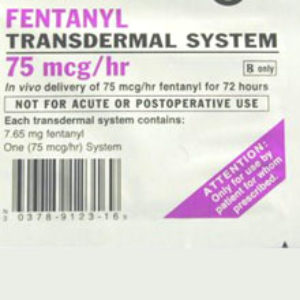Fentanyl Patch Problems Continue to Cause Overdose Injuries, Deaths

A large number of users are continuing to experience problems with fentanyl pain patches, including reports of overdose and death that appear to mainly be caused by how the products are designed and manufactured, according to a recent analysis of FDA adverse event reports.
In the latest QuarterWatch report (PDF) released this month by the Institute for Safe Medication Practices (ISMP), more than 1,890 serious adverse events associated with fentanyl were identified during 2012, with 60.7% of those involving medication errors and 42.4% involving product quality problems, which have plagued the fentanyl patch for years.
The ISMP report monitors all adverse events submitted to the FDA, highlighting potential safety signals identified. The most recent report summarized reports submitted during the entire year of 2012.
The fentanyl patch was originally introduced as the brand name Duragesic pain patch, manufactured by a subsidiary of Johnson & Johnson. It is now widely available as a generic, and a number of drug companies make fentanyl pain patches, including Watson, ALZA and Mylan Pharmaceuticals.
The pain patch products contains powerful fentanyl gel, which is designed to be slowly delivered through the skin in a regulated manner. Fentanyl is a painkiller that is about 100 times more powerful than morphine.
Since it was introduced, the Duragesic patch has been plagued by a number of manufacturing problems, where some patches contained defects that allowed gel to leak out of the patch, posing a risk of fentanyl overdose.
According to the ISMP, while other adverse events highlighted in their QuarterWatch report usually focus on drug side effects, issues with fentanyl appear to largely be caused by defects or problems with the patch delivery.
Most of the reports of fentanyl patch problems identified by the ISMP were vague, including descriptions like “product quality issue,” which was used in 724 cases. More than 100 reports noted that there were problems with patch adhesion.
Accidental Exposures Linked to Deaths
Multiple fentanyl patch recalls have been issued by different manufacturers over the past decade, leading many critics to question whether the pain patch can be safely manufactured. If the fentanyl gel leaks out due to a manufacturing defect or is delivered through the skin at a faster rate than intended, it can cause potentially fatal overdose.
The FDA has also issued several safety warnings about risks associated with fenanyl patches. Most recently, the FDA issued a drug safety communication last month, reminding users that the fentanyl patch can remain deadly even after it is discarded, warning users and caregivers to exercise care with proper disposal.
“Of particular concern were 33 cases of accidental exposure, which can be fatal in children,” the ISMP report notes. “In September 2013 the FDA reported it had learned of two more accidental exposure deaths in children in the past 18 months, both cases originating from ISMP’s National Medication Error Reporting Program.”
Between August 7, 1990, when the Duragesic patch was first approved, and April 16, 2012, the FDA has been notified of at least 30 cases of pediatric exposure to fentanyl patches, 10 of which resulted in death. Of the cases, 28 involved children under the age of 10, with most being two years old or younger.
In April 2012, the U.S. Centers for Disease Control and Prevention (CDC) issued a report noting that the death rate among children due to prescription drug overdose has risen significantly over the last several years and accounted for 57% of all poisoning deaths of children between the ages of 15 and 19 as of 2009. That was up from 30% in 2000. The CDC found that as other causes of child death were on the decline, prescription drug overdoses were on the rise.
Fentanyl Patch Overdose Lawsuits
Johnson & Johnson and the manufacturers of generic equivalents face a number of fentanyl patch lawsuits filed on behalf of individuals who have died or suffered catastrophic injury caused by fentanyl overdose.
A handful of Duragesic patch lawsuits against Johnson & Johnson and their Janssen Pharmaceuticals subsidiary have gone to trial and resulted in multi-million dollar damage awards. In addition, a number of fentanyl patch overdose settlements have been reported.
Last year, the U.S. Judicial Panel on Multidistrict Litigation (JPML) ordered the consolidatation for all wrongful death lawsuits over Watson fentanyl patches, centralizing the litigation before U.S. District Judge Matthew F. Kennelly in the Northern District of Illinois. There are currently more than two dozen lawsuits that are being coordinated during pretrial proceedings as part of an MDL, or multi-district litigation.
Watson had sought to consolidated all lawsuits involving fentanyl patches manufactured by any generic drug makers as part of a single MDL. However, the U.S. JMPL determined that the design of the Watson patch, which features a reservoir design, as opposed to a matrix design for regulating the delivery of the fentanyl gel, justified limiting the MDL to only Watson fentanyl patches because of the unique product and defendant-specific issues.
Get more articles like this sent directly to your inbox.
"*" indicates required fields







0 Comments